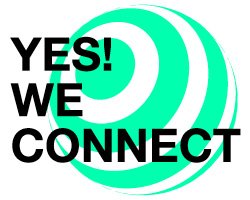Onboard Week day 2 - The time is NOW to start Preboarding
The second day of Onboard Week was dedicated to Preboarding
The title that I use here was the closing comment of Tony de Graaf of Smart Recruiters. He was one of the speakers, together with Henk Ritmeester of Microsoft and Peter Straatsma of Appical.
Below I share my 10 learnings of Onboard Week day 2 with you.
Learning 1 Preboarding starts from the moment your candidate says Yes!
So what is preboarding? During the session the audience and speakers agreed on what preboarding stands for. It is the phase between the Yes! of your candidate until the first day on the job.
Learning 2 Preboarding drives retention
Tony and Peter explained that preboarding is a strong driver of retention. If you keep in touch with your new hire, introduce her or him to the team, start training before day 1, etcetera your new hire is more likely to show up for his first day on the job and stay longer with the company.
Learning 3 The manager is the key to success in pre and onboarding
Henk supported the previous learning by showing the data from Microsoft Workplace Analytics. It turns out that the hiring manager is a huge factor in retention. If managers are supportive of their new hire, involve them early on and have a good network themselves the new hire intent to stay on the job rises with 8%.
Learning 4 Make preboarding a great experience
So what do you need to do to achieve all this? Make the preboarding a great experience. And that sounds a bit grand, but might be quite simple. For instance by having a team member or the manager act as a buddy. Or by involving the new hire in team activities even before the first day on the job. Or start certain trainings before day one.
And of course use the Appical app 😊. Very important here is to deliver on the promises you made in the hiring process. Do not underdeliver.
Technology, processes and people have to be in sync to deliver a strong preboarding.
Learning 5 Share information before starting, but only relevant stuff
Peter made this point. It might be a good idea to start sharing information with your new hire before day 1. But if you do so, make sure to make it personal, engaging, relevant and deliver it in smart packages. Check-back that you do not overflow your new hires, give them irrelevant information or get the timing wrong.
Learning 6 Data tell you the real story
Henk had a real cool story on what Microsoft Workplace Analytics enables us to do. For instance the data show you when new hires had their first meeting with the manager, the team, colleagues from other departments, other managers, customers… And off course much more.
The data tell the real story. These are the facts that are reported back to the people in the organization. And then they add explanations to the data which adds a whole new dimensions to engagement surveys.
Learning 7 Work on connection
Most important conclusions of Microsoft are that new hires build a network faster if their manager has a bigger network. They are more creative when the manager is better connected. And new hires are more productive sooner and understand where they can contribute better, when their manager is connected better.
So… make sure your managers are well connected within the organization.
Learning 8 Involve all stakeholders in your pre and onboarding design team
Onboarding and preboarding are complex processes in organizations. A lot of people, processes and systems are involved.
Tony suggested you should start with making a stakeholder analysis, before you assemble your team to design the preboarding.
Learning 9 Stay true to yourself
With managing expectations also comes knowing yourself and your organization. Don’t try to be something that you are not.
Learning 10 Don’t see yourself as a cost center, but as a difference maker!
Tony empowered the audience with this quote. You as an HR professional and your HR team are really important to the success of the organization. If you believe that (start there), you should be able to make that explicit to your management board. This starts with making the link between your work and the goals of the organization. And then try to implement metrics that show the management board how you contribute to the goals. Not easy, but really important.
So, no time to waste. Start working on your preboarding process NOW!
Hope to see you tomorrow for Onboard Week part 3.
Greetz, Frank


